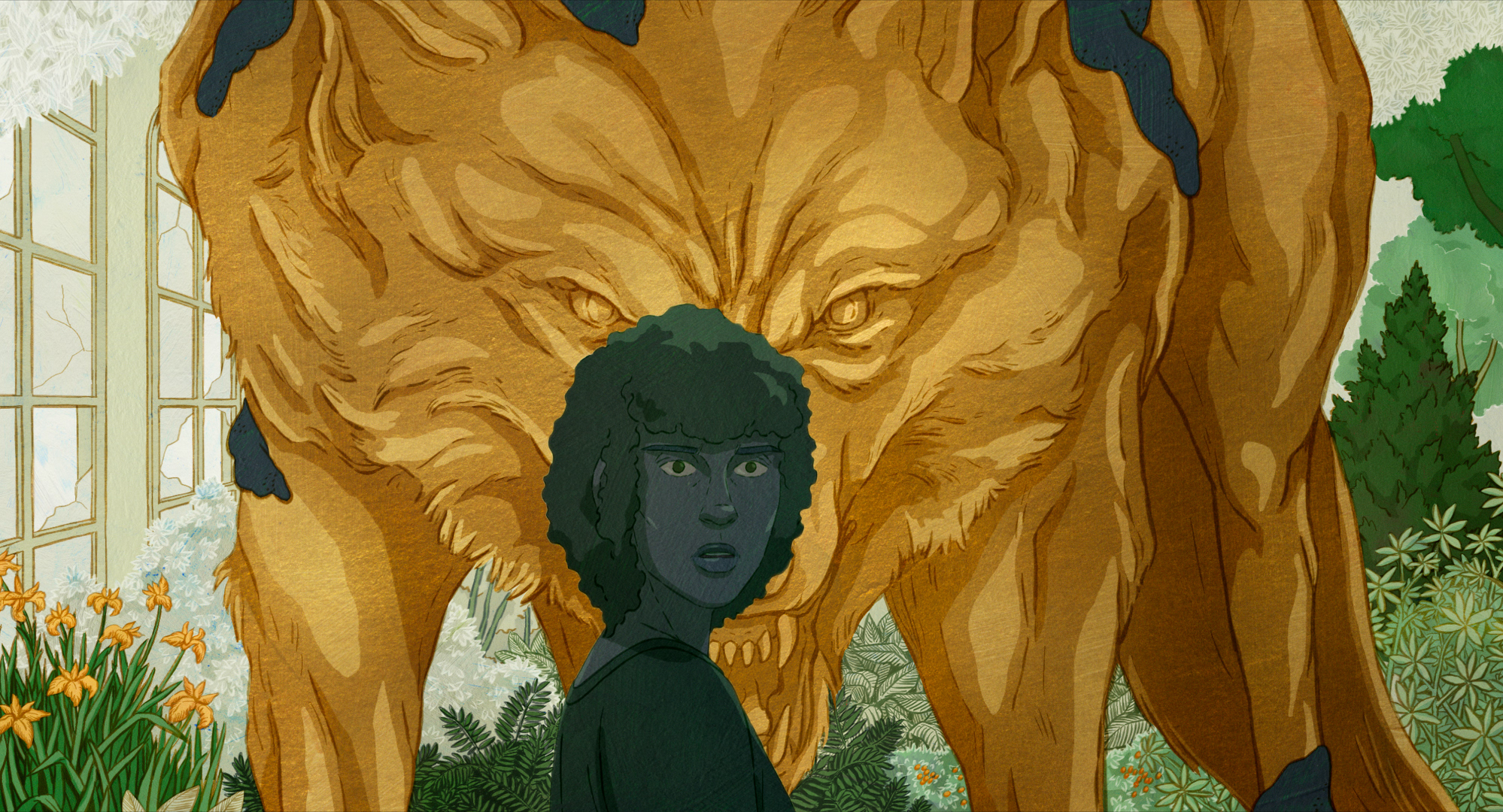Director: Félix Dufour-Laperrière
Writer: Félix Dufour-Laperrière
Stars: Karelle Tremblay, Barbara Ulrich, Zeneb Blanchet
Synopsis: Young activists attempt an armed attack that fails, leading one to abandon her comrades. A former member haunts her, exploring violence, beliefs, friendship, love against societal crises.
“Don’t abandon what makes you free and dangerous. And be careful where you step,” one character in Félix Dufour-Laperrière’s Death Does Not Exist (La Mort n’existe pas, screening at the 2025 Cannes Film Festival sidebar Quinzaine des cinéastes) states halfway through the film. It perfectly encapsulates what the French animation director wants to explore in his latest experimental work. It is a layered and cautionary message to the characters and the audience watching. We should hold onto what shapes us and gives us autonomy, individuality, and independence, not letting go of our edge, courage, and nonconformity. But, to the same degree, we should be aware of our surroundings and the consequences of our actions as we navigate this slowly crumbling world. We are free, but everyone is watching.
The world is full of traps that can cost all that we love. An animated film that is both mystical and grounded in various ways, Death Does Not Exist is about commitment, in all that the word entails, and connection, both in the physical (romances, friendships, encounters) and metaphysical (the brooding and nurturing intersection between life and death). Dufour-Laperrière conceives a story with its characters riddled with self-doubt, contradictions, impossibilities, and hard-hitting existential questions. The characters are brooding, slowly realizing that there’s forthcoming damnation–something they must accept and commit to before it is too late. Because of how the film is constructed, the audience places themselves in the mindset of the characters during their treacherous dilemmas and ponders the things we must come to terms with.
Death Does Not Exist begins with an array of still frames and solid color canvases in which you can still see the brush’s etchings, as the sound of an exhausted woman breathing heavily is heard in the background. It is then quickly followed by a selection of images showing gold statues in the garden of a wealthy family. These statues allude to power or extreme wealth, the ridiculous things rich people spend their money on. You may not know it yet, but these statues foreshadow some of the story’s arcs. Wolves and sheep; weak hummingbirds; a slight caress between two people; a woman with a thousand questions. Those are the statues. This is a story of people haunted by regret, searching for meaning in the aftermath of a harsh decision, seen through the perspective of the survivors of a failed heist.
A group of angsty activists meet up in the forest near the house of a wealthy family, preparing for their bullet parade to ensure everything goes as planned. It is all guns blazing and no survivors allowed; they want this violent act to set the trend for an uprising against the higher class and their debauchery. Everyone seems ready with their fingers on the trigger, except for Hélène (voiced by Zeneb Blanchet), whose perspective we will follow and whose mind we will dissect. The thought of killing a person tears her apart. Hélène is frequently asked if she is ready to pull the trigger, both literally, by gunning down whomever is in her way, and metaphorically, committing to this team and the consequences that might arise. Her silence hides a psychological breakdown that she can’t even begin to comprehend.
Hélène is the ghost of doubt in a room full of certainty, succumbing to the desolation as the day of reckoning is near. She might say she is prepared, but her face and attitude say otherwise. When the day comes, everybody is locked and loaded. They slowly approach the mansion, waiting for the right moment to strike. The gates open and they approach with haste. And everything goes haywire in a matter of seconds. One after another, each member of the job is shot to death by the security guards. Hélène, in the heat of the moment, freezes and runs away from the blood bath, scared desolate because of just happened. Dufour-Laperrière depicts her escape as a harmless sheep hunted by wolves, rapidly catching up to her.
Dufour-Laperrière uses animal metaphors to chart the evolution of Hélène’s psyche and moral compass. The wolves and sheep underscore her vulnerability and inevitability of her reckoning, the rupture of innocence and birth of a new life outside the one she briefly tried to belong to alongside the other activists. After several miles out, Hélène takes a big fall, which leaves her unconscious. When she wakes up, Hélène notices that one of her friends, Manon (voiced by Karelle Tremblay), is beside her. Manon is disappointed that Hélène ran away from them, leaving the crew behind to die a painful death. “You swore we’d be together forever”, Manon says to her. But through the disappointment, Manon offers a second chance to keep their relationship alive. This threat sends chills down her spine and flips the film into an unexpected territory filled with hope and melancholy.
Through psychedelic and metaphorical imagery, including ones that reference the cosmic flower-covered animal cadavers in Alex Garland’s Annihilation, beautifully animated by Dufour-Laperrière and team, Hélène is forced to revisit her convictions and choices, as well as confront her fears, morals, and most hurting woes, disrupting her perception of right and wrong, life and death, and the true meaning of freedom. It unravels with thorough abstraction, utilizing elements from filmmakers like Philippe Grandrieux–the power of images presented to the audience with every possible form of love, violence, and life, even at its darkest–and Jan Švankmajer, although not to the extent of being grotesque or highly absurd with its creations. She traverses a dreamlike wasteland, where time warps and landscapes melt into memory.
Dufour-Laperrière adopts a looser narrative structure here, where linear logic is tossed aside for a reflective, existentialist resonance that keeps the viewer gripped onto the story. It is a character’s reckoning that is both internal and cosmic, positioning Hélène not only as a survivor of a failed heist but as a crucible for her loyalty, morality, faith, and inner angst. The final movements of the film seem to signify that Hélène is nearing a state of inner peace. But there’s a side to these last few images that does seem to hint towards that hopeful fairytale ending; it suggests surrender. Hélène accepts and commits to this finale, wherever it may lead her, to joy or further suffering, which makes Manon’s purpose of guiding this lost soul into one of enlightenment.
One of the last lines in Death Does Not Exist comes from Manon, and it has stayed with me a lot: “Life… It’s a movement, and a movement has a cost, inevitably.” This line reminded me of the quote in the poster for Gaspar Noé’s Vortex. “Life is a short party that will soon be forgotten.” Of course, Noé’s one is far darker and more depressing. But the two lines connect in confronting the transient, often painful, nature of existence. Dufour-Laperrière and Noé want to highlight the fading of memory and meaning as life continues, and people leave and enter your life, like people checking into a hotel and leaving when their vacation is over. Moving through life demands something in return, whether regarding joy or despair. And while Death Does Not Exist examines plenty of topics other than mortality and acceptance, this element, alongside this quote from the character of Manon, stuck with me the most.








